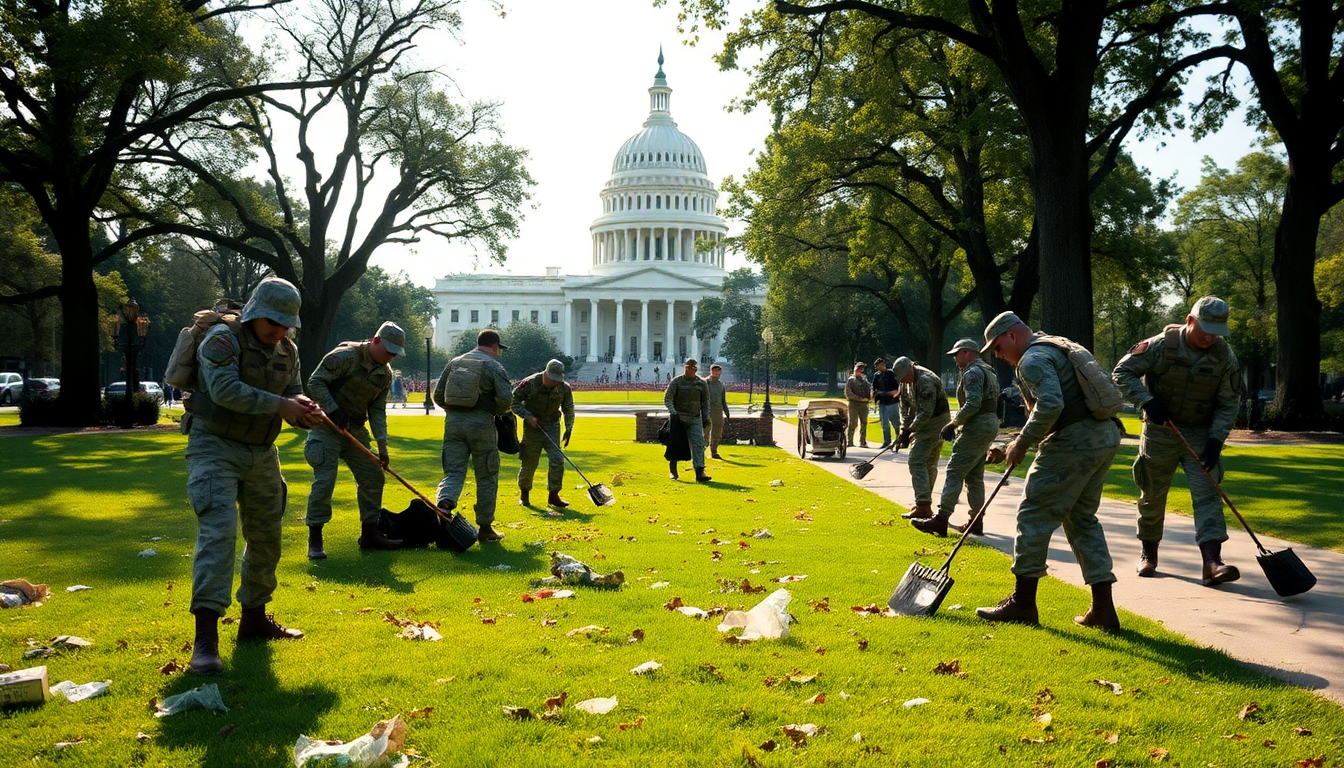Table of Contents
In a surprising twist, members of the National Guard were spotted picking up litter in Lafayette Park, a notable spot right near the White House. This initiative is part of a larger federal deployment under President Trump’s administration and highlights the challenges Washington, D.C. is currently facing, especially regarding its public image and tourism appeal. With over 110 soldiers dedicated to cleanup duties, it seems the city is grappling with its reputation amidst swirling political narratives and community needs. Isn’t it fascinating how a cleanup effort can draw attention to deeper issues?
Understanding the National Guard Deployment
Under a crime emergency plan, President Trump ordered around 800 National Guard members to Washington, D.C. While many of these troops are patrolling alongside local law enforcement, a sizable portion is focused on logistical support and community service. Recent cleanup operations in iconic locations like the National Mall and the Tidal Basin not only enhance the city’s visual appeal but also convey a proactive approach to public safety and urban upkeep. Isn’t it intriguing how the appearance of a city can influence public perception?
This cleanup effort, known as the “Safe and Beautiful Task Force,” showcases the administration’s attempt to reshape Washington’s narrative during a time of intense scrutiny. The sight of military personnel collecting trash against a backdrop of ongoing political debates highlights the complex relationship between governance, public perception, and the realities of urban life. As tourism leaders launch new marketing campaigns to counter negative views, the role of the National Guard in community projects becomes a pivotal topic of discussion.
Tourism Trends and Their Economic Impact
Despite the ongoing political chatter, Washington’s tourism sector has proven resilient. Reports indicate that the city welcomed a record 27.2 million visitors in 2024, generating an impressive $11.4 billion in spending. This influx not only boosts local businesses but also significantly contributes to tax revenues, supporting over 111,500 jobs in the capital. However, forecasts for 2025 suggest a possible 5.1% decline in international visitors, raising questions about the sustainability of this upward trend. How can the city maintain its appeal in a changing landscape?
To tackle these challenges head-on, Destination DC, the city’s official marketing organization, has rolled out the “We the People DC” campaign. This initiative shines a spotlight on local residents who add to the city’s vibrancy, aiming to shift perceptions and promote a narrative that underscores community strength and resilience. The goal is to bridge the gap between political rhetoric and the authentic experiences of those living and thriving in Washington. Isn’t it refreshing to see campaigns that focus on real stories?
Looking Ahead: Urban Development Initiatives
As Washington sets its sights on the future, several key developments are poised to reshape the city and enhance its tourism appeal. By 2026, the National Archives will unveil a $40 million renovation, and a new immersive museum is in the works under the Lincoln Memorial. Additionally, the Jefferson Memorial plans to introduce a modern exhibit hall, while the National Air and Space Museum is gearing up to complete its final gallery renovations. These projects are expected to attract millions of visitors and drive significant economic activity. What new experiences will these developments bring to the city?
The upcoming 250th anniversary of the United States in 2026 presents a unique chance for Washington to elevate its status as a top tourist destination. With convention business projected to generate nearly 700,000 hotel room nights, the city is on the brink of a potential resurgence—if it can effectively manage its public image and deliver on the promise of a safe, engaging, and beautiful capital. Isn’t it exciting to think about what the future holds for this iconic city?


